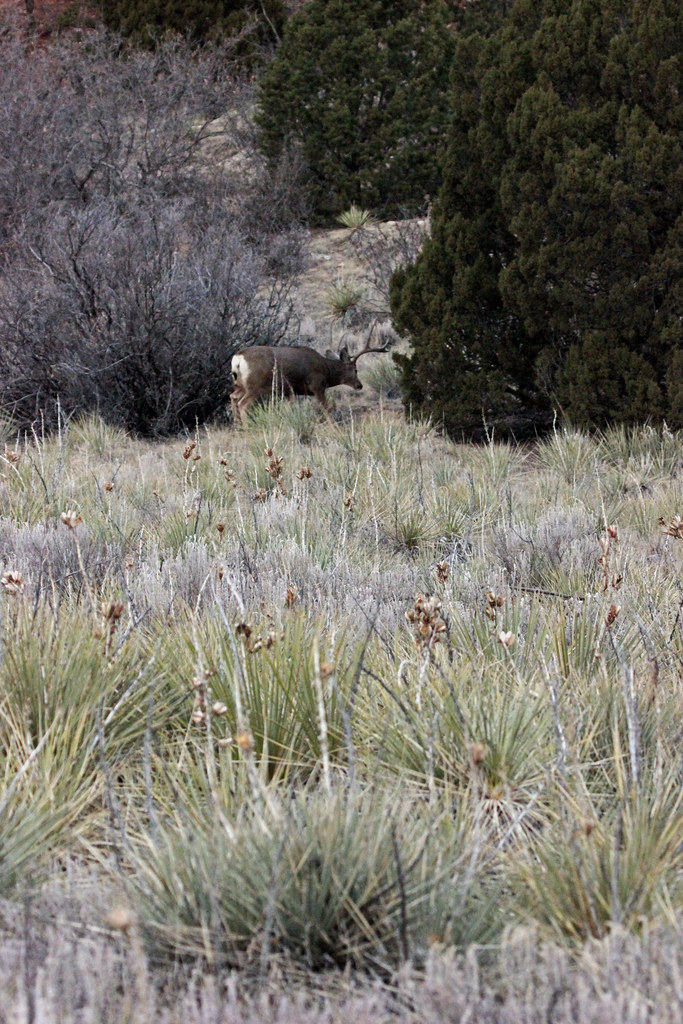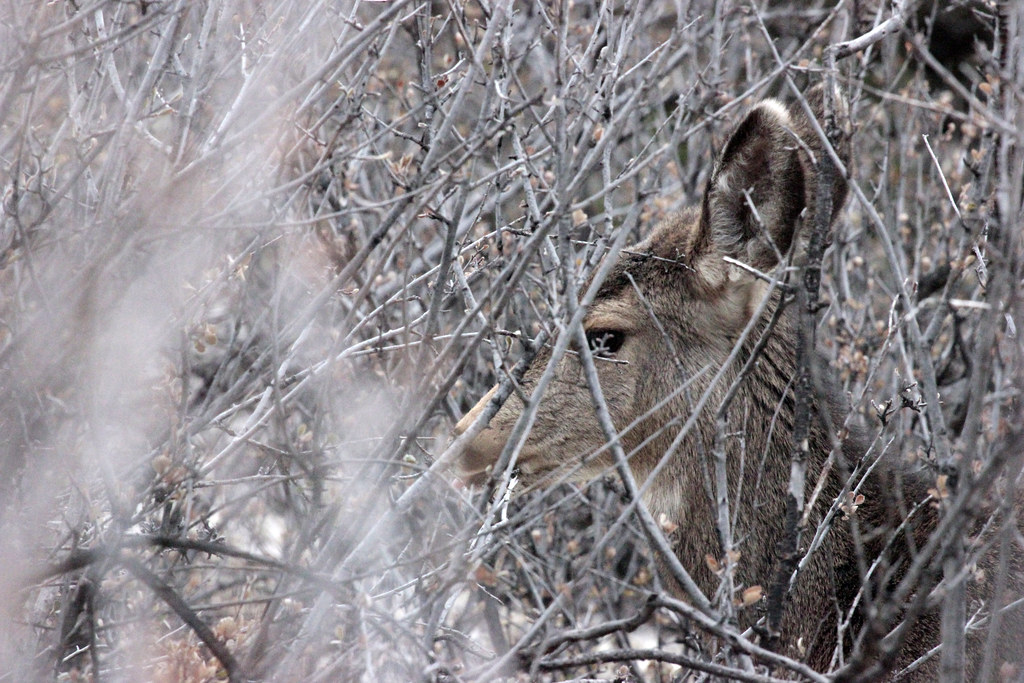It is the oldest of rodeo's timed occasions. The cowboy ropes a running calf around the neck with a lariat, and his horse stops and sets back on the rope while the cowboy dismounts, runs to the calf, tosses it to the ground and ties 3 feet together. (If the calf falls when roped, the cowboy needs to lose time waiting for the calf to return to its feet so that the cowboy can do the work.) The task of the horse is to hold the calf constant on the rope.
Breakaway roping - a kind of calf roping where a very short lariat is utilized, connected lightly to the saddle horn with string and a flag. When the calf is roped about the neck, the horse stops, the flagged rope breaks free of the saddle, and the calf works on without being thrown or tied.
In locations where conventional "tie-down" calf roping is not enabled, riders of both genders compete. Group roping, also called "heading and heeling," is the only rodeo event where males and females riders complete together. Two individuals capture and restrain a mature steer. One horse and rider, the "header," lassos a running guide's horns, while the other horse and rider, the "heeler," lassos the steer's two hind legs.
Two individuals capture and restrain a mature steer. One horse and rider, the "header," lassos a running guide's horns, while the other horse and rider, the "heeler," lassos the steer's two hind legs.
This strategy originated from approaches of capture and restraint for deer trail pioneer historical society & museum treatment utilized on a ranch. Barrel racing - is a timed speed and agility event. In barrel racing, horse and rider gallop around a cloverleaf pattern of barrels, making nimble turns without knocking the barrels over. In professional, college and high school rodeo, barrel racing is a specifically females's sport, though males and kids occasionally contend at local O-Mok-See competition.
This is most likely the single most physically harmful occasion in rodeo for the cowboy, who runs a high risk of jumping off a running horse head initially and missing out on the steer, or of having actually the tossed steer arrive on top of him, sometimes horns first. Goat connecting is usually an occasion for women or pre-teen women and kids; a goat is staked out while a mounted rider runs to the goat, dismounts, gets the goat, tosses it to the ground and ties it in the same manner as a calf.
This event was created to teach smaller sized or more youthful riders the essentials of calf roping without needing the more intricate ability of roping the animal. This event is not part of professional rodeo competitors. Saddle bronc riding; in rough stock occasions, the animal generally "wins." In spite of popular myth, the majority of modern-day "broncs" are not in reality wild horses, however are more frequently ruined riding horses or horses bred specifically as bucking stock.
Bronc riding - there are 2 departments in rodeo, bareback bronc riding, where the rider is just allowed to hang onto a bucking horse with a kind of surcingle called a " rigging"; and saddle bronc riding, where the rider utilizes a specialized western saddle without a horn (for security) and hangs onto a heavy lead rope, called a bronc rein, which is connected to a halter on the horse.
Although skills and devices similar to those needed for bareback bronc riding are required, the occasion differs substantially from horse riding competition due to the threat involved. Because bulls are unpredictable and may attack a fallen rider, rodeo clowns, now called "bullfighters", work during bull-riding competitors to sidetrack the bulls and assist avoid injury to rivals.
Ages vary by area, as there is no nationwide rule set for this occasion, however generally participants are at least eight years of ages and contend through about age 14. It is a training occasion for bronc riding and bull riding. A number of other events might be set up on a rodeo program relying on the rodeo's governing association.
It is seldom seen in the United States today since of the tremendous risk of injury to all involved, as well as animal cruelty issues. A single roper ropes the guide around the horns, throws the rope around the steer's back hip, dallies, and trips in a ninety-degree angle to the roped steer (opposite side from the previously mentioned hip).
This causes the steer to "journey". Steers are too big to incorporate the way utilized for calves. Absent a "heeler," it is really challenging for a single person to restrain a grown steer once down. Nevertheless, the guide's "journey" triggers it to be temporarily disarmed permitting its legs to be incorporated a way comparable to calf roping.
However, it is practiced at some rodeos in Mexico, and may also be described as "guide tripping." Guide daubingUsually seen at lower levels of competitors, an event to help young rivals learn abilities later on needed for steer wrestling. A rider bring a long stick with a paint-filled dauber at the end attempts to run up together with a guide and put a mark of paint inside a circle that has actually been drawn on the side of the animal.
It is more typically seen as a gymkhana or O-Mok-See competition. In pole flexing, the horse and rider run the length of a line of six upright poles, turn sharply and weave through the poles, turn once again and weave back, then return to the start. Chute dogging is an occasion to teach pre-teen boys how to guide wrestle.
The young boy will then position his right arm around the guide's neck and left hand on top of its neck. When ready, the gate is opened and steer and candidate exit the chute. Once they cross over a designated line, the competitor will get onto the horns of the steer (colloquially, to "hook-up" to the guide) and battle it to the ground.
When ready, the gate is opened and steer and candidate exit the chute. Once they cross over a designated line, the competitor will get onto the horns of the steer (colloquially, to "hook-up" to the guide) and battle it to the ground.
A common rodeo starts with a "Grand Entry", in which installed riders, numerous bring flags, including the American flag, state flags, banners representing sponsors, and others go into the arena at a gallop, circle when, come to the center of the arena and stop while the staying individuals go into. The grand entry is utilized to introduce a few of the competitors, officials, and sponsors.
If a rodeo queen is crowned, the entrants or winner and runners-up may likewise exist. If you have any questions regarding where and the best ways to make use of Ffxiv-Wiki.com, you can contact us at the web page. Range acts, which might consist of musicians, technique riders or other entertainment might take place halfway through the rodeo at intermission. Some rodeos might also consist of novelty occasions, such as guide riding for preteens or "mutton busting" for little children.
Such contests often are unregulated, with a higher threat of injury to human individuals and bad treatment of animals than in traditionally-sanctioned occasions, especially if usage of alcohols by individuals is allowed. Official associations and in-depth guidelines came late to rodeo. Until the mid-1930s, every rodeo was independent and chose its own events from amongst nearly one hundred different contests.
Athletes from the US, Mexico and Canada contended freely in all three countries. Consequently, charreada was formalized as an amateur team sport and the international competitions stopped. It remains popular in Mexico and Hispanic neighborhoods of the U.S. today. Many associations govern rodeo in the United States, each with a little various guidelines and different occasions.





